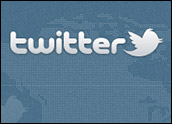
The United States’ hopeful tinkerers and entrepreneurs gathered Wednesday on the White House lawn to showcase their innovative ideas at the Maker Faire.
The Maker Faire brings together students, educators, artists, engineers and innovators who have an invention or an idea about how to make something. Billed as “The Greatest Show (and Tell) On Earth,” the event is meant to showcase everything from the practical to the wacky.
The Maker Faire got its start in the Bay Area, and events since then have been held in several major cities worldwide. This year, the White House decided to host it as part of an effort to energize the nation’s innovators and spark a “grassroots renaissance in American manufacturing.”
President Obama played a key role in the festivities. For much of the event, his tone was light — he mingled with a 17-foot electric giraffe robot making his way through the South Lawn and joked with participants about that extra ‘e’ in Faire. However, he also made a serious call for greater national commitment to science, tech and manufacturing.
The White House outlined several goals related to the Maker Faire: expanding initiatives in both the public and private sectors to help Makers launch businesses and create jobs; decreasing the barriers to entry to becoming Makers; and using Maker creativity and ingenuity to help address some of the U.S.’ most pressing challenges.
Best and Brightest
The Faire featured more than 100 Makers from more than 25 states tackling a variety of challenges. Jane Chen showed off her Embrace Warmer, an affordable, incubating warmer designed to help premature infants that lack access to modern incubators produce enough body heat to survive. The Embrace has already helped more than 60,000 low birth weight infants worldwide.
Partha Unnava, a biomedical engineering student from Georgia, showed off the Better Walk Crutch, which reduces some of the pain and fatigue that crutch users experience.
Another Maker, Sara Wylie, displayed the Grassroots Mapping machine, an affordable DIY tool that attaches to a balloon or kite to help citizen scientists get a better idea of some of the environmental issues in their community, such as where a river needs cleanup.
Another attention-grabber at the Faire was the sleek 100 mpg biodiesel hybrid car built by a group of students from the Workshop School in Philadelphia.
3D printing was a big part of the day. President Obama’s likeness appeared in a 3D-printed bust, as well as on a 3D-printed pancake.
The National Institute of Health used the Maker Faire as an opportunity to showcase its new 3D Print Exchange, an open source database where users can browse, download, submit and print their own 3D models.
Securing a More Maker-y Future?
The White House used the Maker Faire as a platform to stress the importance of science and tech in classrooms.
The event was a perfect way to speak to young people in a manner they could grasp and thus spark their excitement, said Gerald Loeb, professor of biomedical engineering and director of the Medical Device Development Facility at the University of Southern California.
“It is far too easy for engineering education to become about abstract theory and for careers to be spent in cubicles staring at computer models or stuff instead of handling real stuff,” he told TechNewsWorld. “If we are going to get our brightest students into STEM education, they need to see what it is for.”
It’s a lesson that even those at the top level of U.S. tech and manufacturing could learn, said Trip Chowdhry, senior analyst for Global Equities Research.
“The country has many companies that are thinking outside the box and doing lots of innovative things, even if investors don’t like the idea,” he told TechNewsWorld. “Google is an example. But there are too many companies that are only thinking of dividends and investors and can’t see far into the future, and it’s only hurting everyone.”
If the Faire inspired some young people to be innovators for that future, it could be counted as a successful day, said Loeb.
“The growing trend to on-shoring the stuff we used to off-shore is fueled by having engineers and industrial designers and machinists and technicians who know stuff,” he added. “Having the Maker Faire at the White House is one more way we tell the next generation that this stuff really matters.”





















































